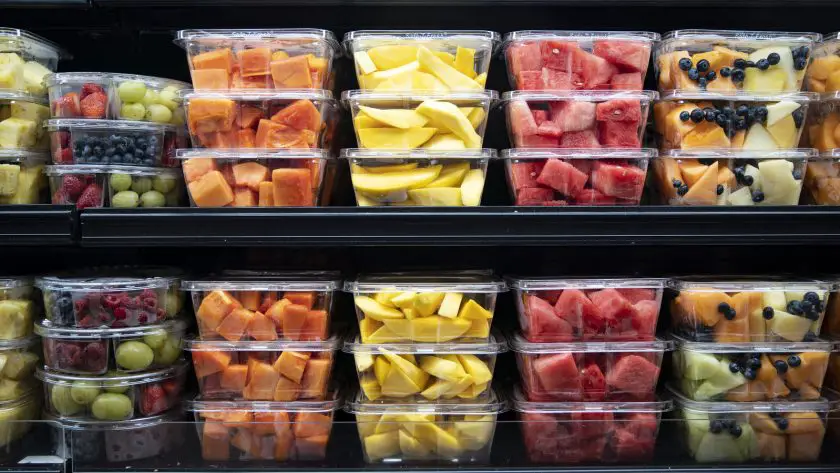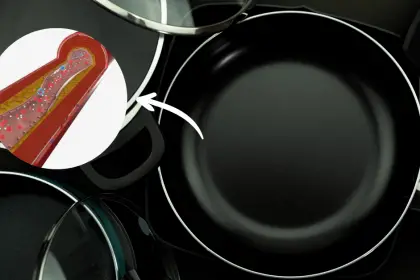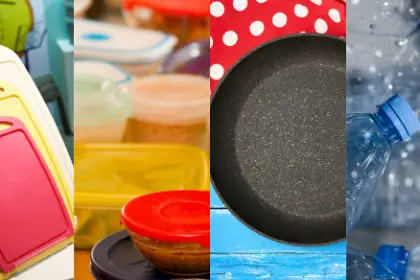Walk into any grocery store and you’ll find them — neat little plastic containers of bright pineapple chunks, melon cubes, and perfectly sliced strawberries, all ready to eat. They look convenient, fresh, and tempting. After all, who wouldn’t want to skip the cutting, peeling, and mess?
But here’s the truth: buying pre-cut fruit comes with more risks and downsides than most people realize. From preservatives that dull nutritional value to bacterial contamination dangers, those neatly packaged fruit cups aren’t as innocent as they appear.
Here are five strong reasons you should skip pre-cut fruit entirely — and why buying whole fruit is the better choice every time.
1. Pre-Cut Fruit is More Likely to Harbor Harmful Bacteria
When fruit is whole, its skin acts as a natural barrier against bacteria. The moment it’s cut, that protection is gone. Every slice increases the exposed surface area, creating the perfect breeding ground for pathogens like Salmonella, E. coli, and Listeria.
Studies have shown that pre-cut fruit can be 10–20 times more likely to test positive for harmful bacteria compared to whole fruit. The risk is especially high for melons like cantaloupe and watermelon, which have porous surfaces that can trap bacteria. When these fruits are cut, any contamination from the rind gets transferred to the flesh — and since they’re often stored cold but not frozen, bacteria can still multiply.
In 2018, the CDC issued a multi-state recall of pre-cut melon after a Salmonella outbreak sickened more than 60 people across the U.S. It’s not the only case — there have been repeated outbreaks linked to pre-cut fruit in recent years.
Bottom line: Whole fruit keeps bacteria out until you’re ready to eat it. Pre-cut fruit is like leaving your fridge door wide open — an invitation for trouble.
2. Preservatives and Chemicals Keep It “Fresh” — But Not in a Good Way
To keep cut fruit looking bright and appetizing, many stores treat it with preservatives like sulfur dioxide or dips containing ascorbic acid and calcium salts. While some of these are technically “safe” in small amounts, they still alter the natural freshness of the fruit.
Some sensitive individuals experience allergic reactions to these preservatives — symptoms like headaches, skin irritation, or stomach upset. Even if you don’t react immediately, these chemicals can reduce the fruit’s natural vitamin content over time.
And here’s another kicker: cutting fruit speeds up oxidation (the same process that makes apples turn brown). While preservatives slow this browning, they can’t stop the loss of antioxidants and vitamin C — meaning your “fresh” fruit may be nutritionally weaker than a whole fruit you cut yourself.
Bottom line: You’re not just buying fruit — you’re buying fruit plus a chemical cocktail that masks how long it’s really been sitting there.
3. Nutrient Loss Happens Faster
Fruits start losing nutrients the second they’re cut. Exposure to oxygen and light degrades key vitamins, especially vitamin C and some B vitamins. For example:
- Vitamin C can drop by as much as 25–50% within 24 hours of cutting.
- Polyphenols and antioxidants begin breaking down almost immediately.
Whole fruit slows this process naturally because the skin and peel keep oxygen out. A whole orange sitting on your counter can retain its nutrients for weeks. A peeled and segmented orange in a plastic tub? You’re eating a shadow of what it once was.
Bottom line: If you’re buying fruit for health benefits, pre-cut is giving you fewer nutrients for more money.
4. Shorter Shelf Life = More Risk
Despite the preservatives, pre-cut fruit has a short safe-eating window — usually just 3–5 days after cutting, even if refrigerated. But here’s the problem: you have no way of knowing when that fruit was actually cut.
Was it sliced today? Yesterday? Four days ago? You’re taking the store’s word for it. And since many big chain stores prep fruit in bulk at a central facility and ship it out, it could have been cut several days before it even hit the shelf.
By the time you buy it, store it in your fridge, and finally eat it, it could be well past its safest consumption period — increasing your risk of eating something spoiled or contaminated.
Bottom line: Whole fruit lasts far longer, giving you control over freshness.
5. You Pay More for Less
Here’s something most people don’t realize — pre-cut fruit can cost 2–3 times more per pound than whole fruit.
Example:
- Whole pineapple: $2.99 each
- Pre-cut pineapple chunks: $6.99–$8.99 per pound
Not only are you paying more for the same fruit, but you’re also getting less nutritional value, more wasteful packaging, and higher risk of illness. That “convenience” comes with a hefty price tag — one you could easily avoid by spending a few extra minutes cutting your own.
Bottom line: Pre-cut fruit isn’t just risky, it’s a money pit.
Why Whole Fruit Wins Every Time
When you buy whole fruit, you control the freshness, safety, and quality. You decide when it’s cut, how it’s stored, and how it’s eaten.
Whole fruit also:
- Keeps more nutrients intact until the moment you slice it.
- Avoids preservatives and unnecessary chemical treatments.
- Has a longer shelf life, reducing waste.
- Costs less and gives you more for your money.
- Tastes better, because you’re eating it at peak freshness, not days after it’s been chopped.
Cutting your own fruit isn’t just safer — it’s also more satisfying. There’s something about slicing into a ripe watermelon or peeling a fragrant orange that makes eating fruit more enjoyable.
How to Make Whole Fruit Just as Convenient
The biggest argument for pre-cut fruit is convenience. People are busy, and cutting fruit takes time. But here’s how to make whole fruit just as easy to grab and eat:
- Batch prep at home – Set aside 10–15 minutes after grocery shopping to wash and cut your fruit, then store it in airtight containers in your fridge.
- Use good tools – A sharp chef’s knife, melon baller, or pineapple corer can cut prep time in half.
- Choose easy-to-eat fruits – Apples, bananas, grapes, and berries require little or no cutting.
- Portion for grab-and-go – Store fruit in small reusable containers so you can toss them into lunch bags or eat them straight from the fridge.
By doing the prep yourself, you keep all the freshness and nutrients — without the contamination risk or chemical additives.
Final Word
Pre-cut fruit might seem like a harmless shortcut, but the risks outweigh the convenience. From higher chances of bacterial contamination and chemical preservatives to nutrient loss, short shelf life, and inflated prices, you’re better off sticking with whole fruit.
Think of it like this: whole fruit is nature’s perfectly designed storage system. It keeps your food safe, fresh, and nutritious until you’re ready to eat it — no preservatives, no hidden handling, no guesswork. All it takes is a knife and a few minutes of your time to get fruit that’s safer, healthier, and far better tasting.
So next time you’re tempted by that bright little fruit cup in the store, remember — it’s not just fruit in there. It’s risk in disguise.



